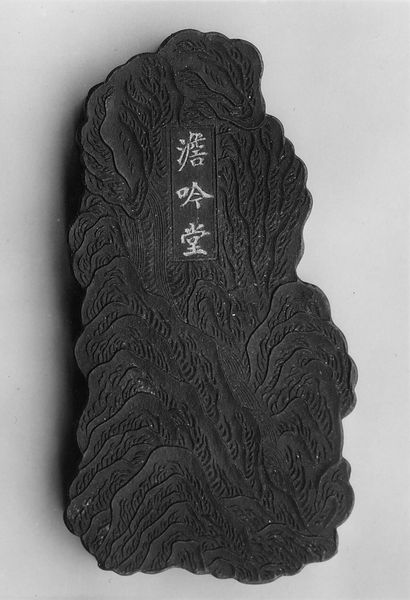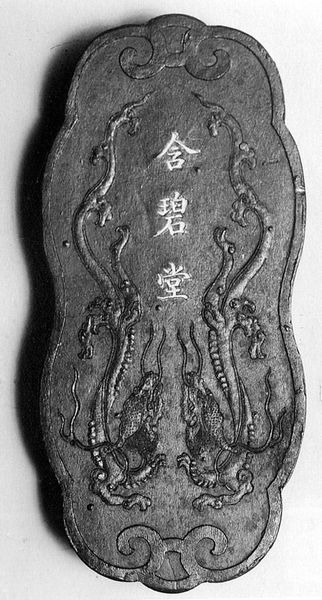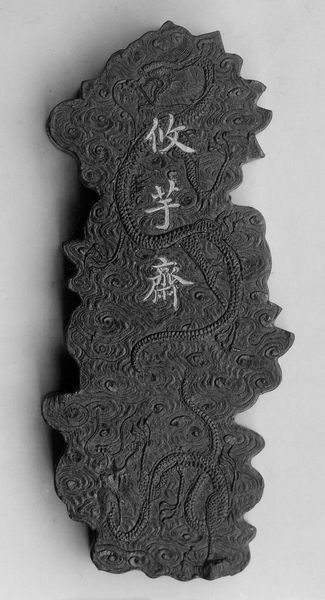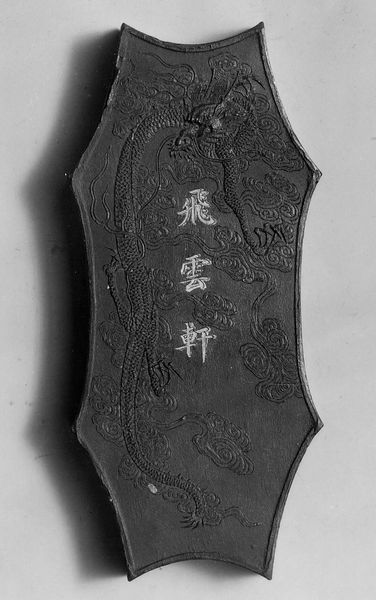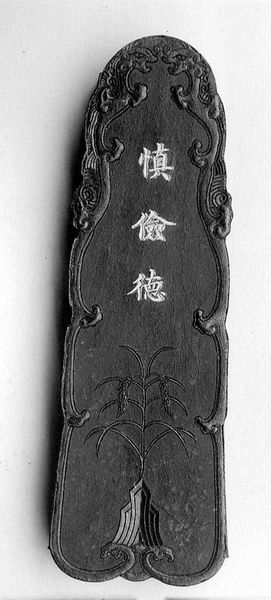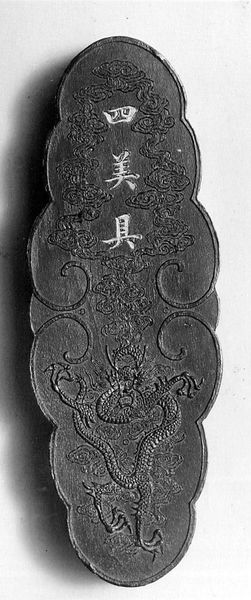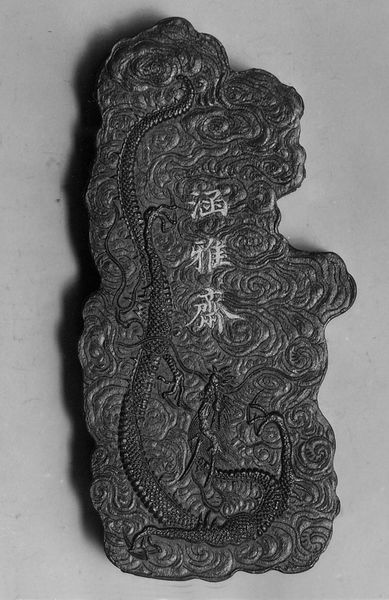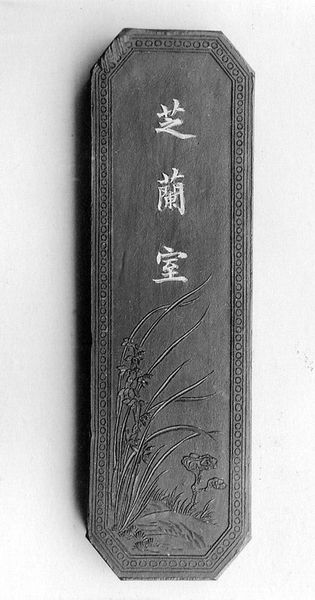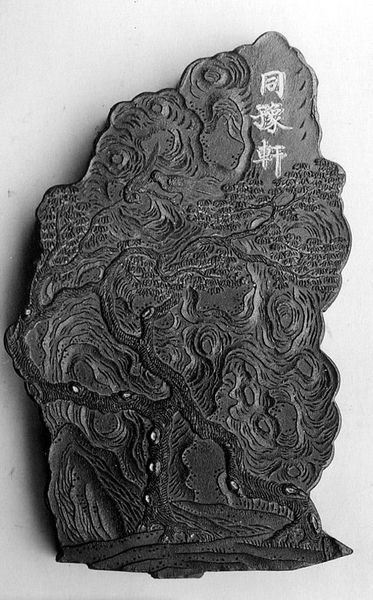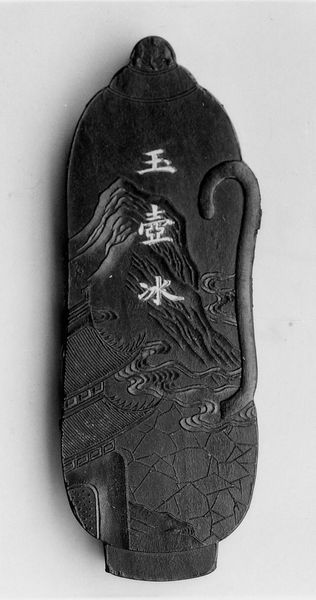
drawing, carving, relief, ink, wood
#
drawing
#
carving
#
asian-art
#
relief
#
landscape
#
ink
#
wood
Dimensions: H. 4 in. (10.2 cm); W. 1 1/2 in. (3.8 cm)
Copyright: Public Domain
Curator: Right now, we're looking at "Pavilion for Prolonging Spring" created sometime between 1871 and 1933, a work of Jian Guzhai. It's an ink drawing, wonderfully carved in relief on wood. It resides here at the Metropolitan Museum. Editor: Oh, my! It feels ancient, like a fossil capturing the dreams of a hermit poet. There's a solemn, silent quality to the mountains and water; even the pavilion feels…contemplative, I suppose? Curator: "Contemplative" is perfect. Considering its existence within museum walls, let's think about the ways we gaze at an ideal, mediated landscape like this versus confronting the reality of environmental change in Asia. Editor: Do you feel an irony? Carved permanence trying to evoke something fluid? Like capturing a cloud, hoping to find something profound in its shape. It doesn't strike me as particularly...joyful, even though its name suggests the renewal of springtime. Curator: That’s insightful! It's less a celebration of spring, maybe, than a desire, even an elegy. Wood, of course, had specific roles as a key material and cultural signifier in traditional China, connecting landscape painting to architectural form, creating these intricate, immersive garden-like settings. Editor: And gardens are so manicured. Thinking about it now, is the artist, in capturing it this way, seeking immortality— both for the depicted landscape and themselves? Or a lament about the transient beauty of, well, spring? Curator: I suspect there is tension there. The relief mimics permanence and recalls other idealized works that would likely only exist within noble’s homes or palaces, but I agree – there is a fleeting sense that can also be felt. And now the image also exists on postcards and websites for new audiences... It's all part of the layering process. Editor: So it morphs, doesn’t it, depending on how it's viewed. And I appreciate the reminder that it is always about who we are, in each moment, interpreting that story on wood. Curator: Yes, because its essence is ultimately mutable. And even within the seeming quietude, there exists space for contemplation— much like spring itself.
Comments
No comments
Be the first to comment and join the conversation on the ultimate creative platform.

